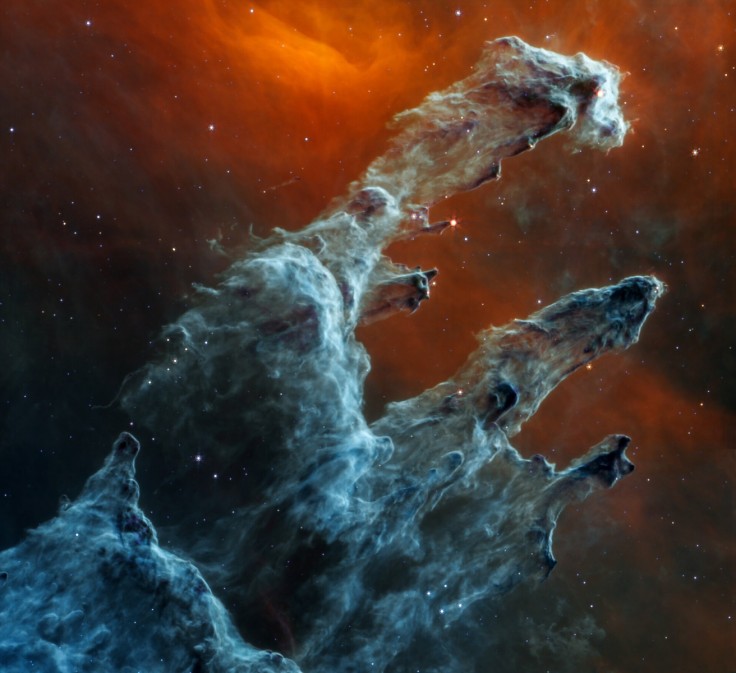Another photo of the Pillars of Creation taken by the James Webb Space Telescope has been released and it is yet another breath-taking image to say the least.
This second photo focuses on the mid-infrared and has been taken using the telescope's Mid-Infrared Instrument.
Just a few days ago, a separate photo of the Pillars of Creation also taken by the James Webb Space Telescope was released to the public. In contrast, this photo was taken using the Near-Infrared Camera.
Another Pillars of Creation Photo Has Been Released

The European Space Agency (ESA) describes the second photo as an "eerie, extremely dusty view" of the Pillars of Creation. This is in contrast to the first image, which can be described as sparklier and brighter due to the presence of multiple stars.
"The dust clouds appear to glow in blue tinges, and loom in front of a red-hued background," a report by Space.com describes.
It can be noted that not many stars are seen in this second view of the Pillars of Creation. According to the ESA, this is because the mid-infrared light cannot detect young stars that are no longer covered in dust. This is in contrast to the first image taken using the Near-Infrared Camera, which was able to capture numerous stars.
Pillars of Creation
According to the National Aeronautics and Space Administration (NASA), the Pillars of Creation is a small feature of M16, otherwise known as the Eagle Nebula, which is located 7,000 light-years away from our planet. The Pillars of Creation spans roughly around four to five light-years only.
The Eagle Nebula was discovered in 1745 by astronomer Jean-Philippe Loys de Chéseaux.
Aside from the James Webb Space Telescope, the Pillars of Creation has been photographed by the Hubble Space Telescope before. It was first photographed by the Hubble in 1995, followed by a second photograph in 2014. Other observatories have also studied the Pillars of Creation, including ESA's Herschel Telescope.
Related Article: NASA Shows 'Pillars Of Creation' Being Devoured By Stars In This Stunning New Infrared Photograph
James Webb Space Telescope
The James Webb Space Telescope is, as of writing, the largest optical telescope currently in space. Because of this, it has the capacity to view old, faint, and distant objects that the Hubble Space Telescope cannot. The Webb is a partnership between NASA, ESA, and the Canadian Space Agency (CSA).
The telescope was named after James E. Webb, who served as NASA administrator from 1961 to 1968. It was launched on Christmas Day in 2021 from the Guiana Space Centre in Kourou, French Guiana. It was launched on an Ariane 5 rocket.
The first images taken by the James Webb Space Telescope were released to the public in July. Included in its first images are photos of the Carina Nebula, Southern Ring Nebula, and Stephan's Quintet.









